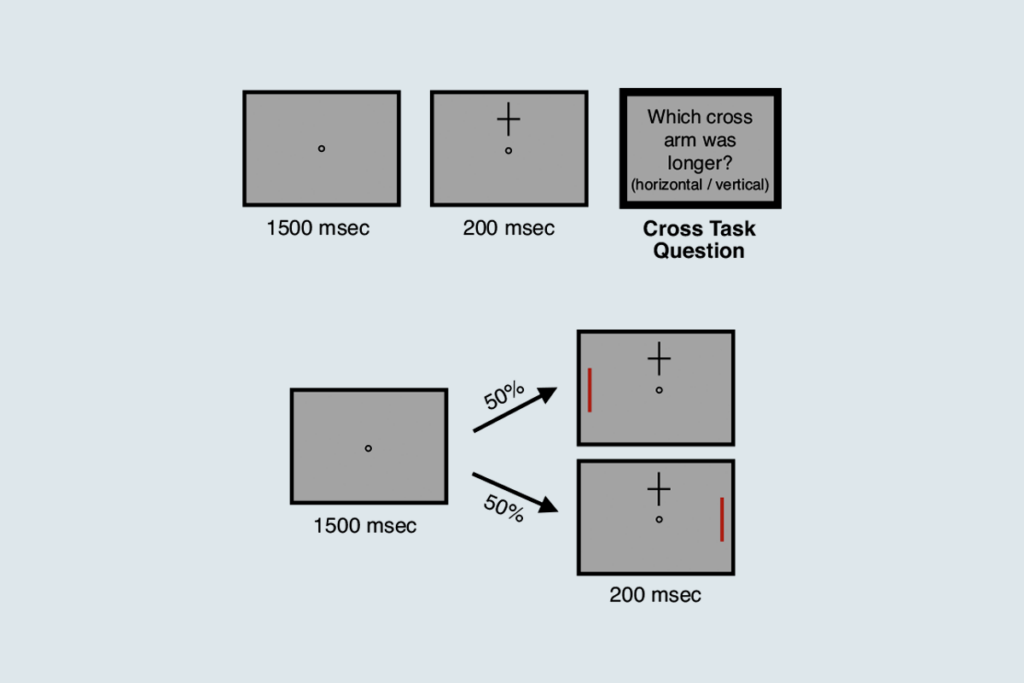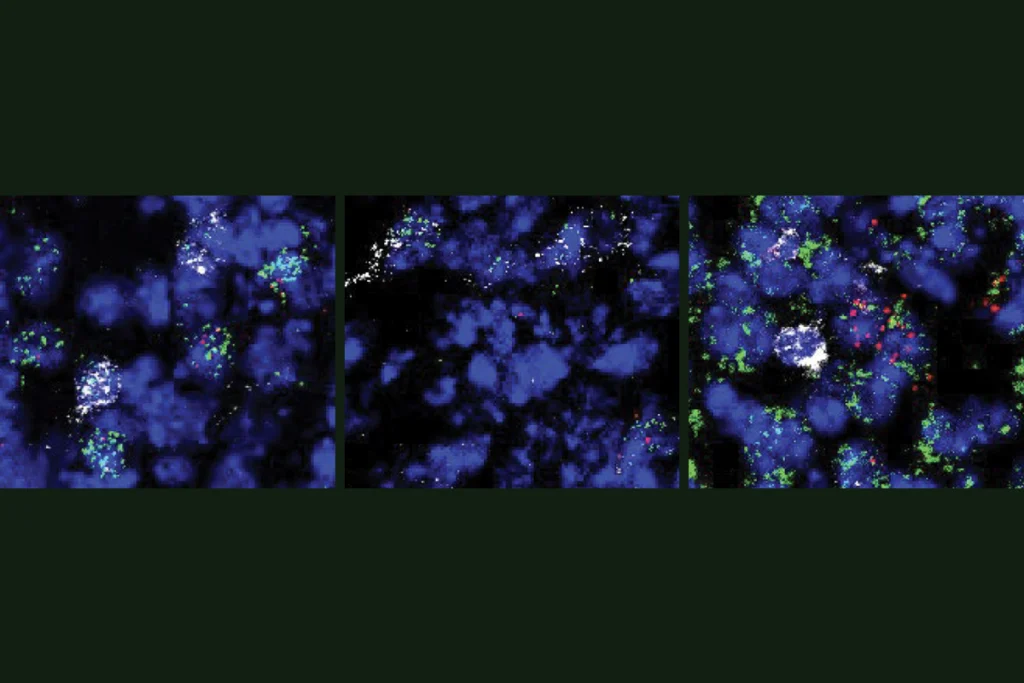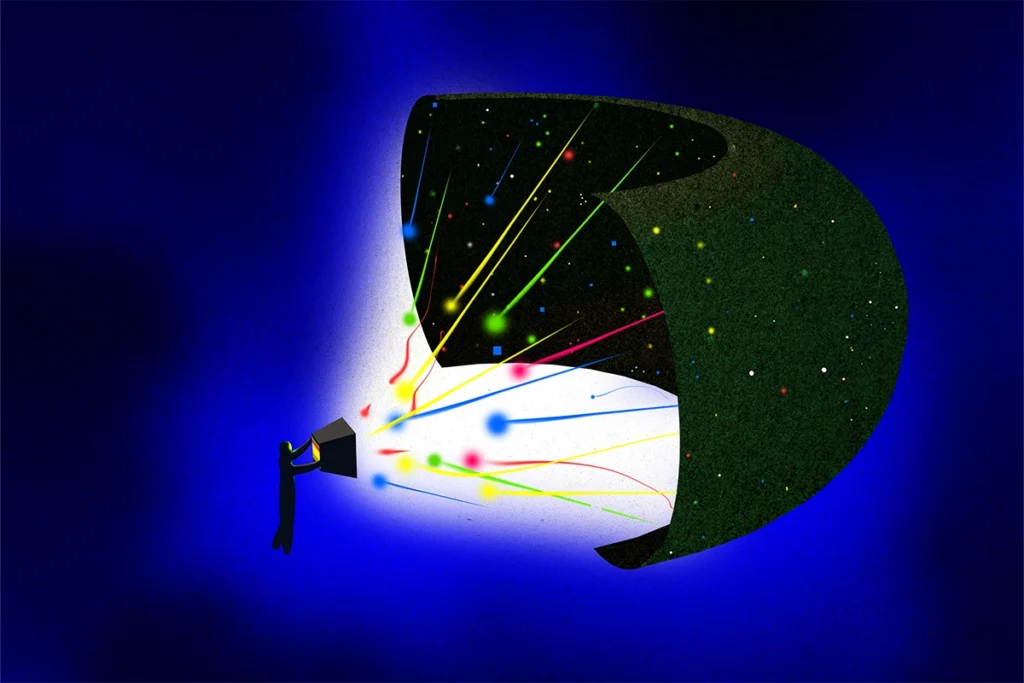The brain is an endlessly dynamic machine; it can wake you from sleep, focus your attention, spark a memory or help you slam on the brakes while driving. But what makes this precision possible? How can the brain dial up just the right amount of alertness or inhibition, and only when it’s needed?
A new study, out today in Nature, may have found part of the answer in an unlikely place: a cluster of small, largely overlooked inhibitory neurons nestled next to one of the brain’s most powerful arousal hubs, the locus coeruleus (LC). Led by Michael R. Bruchas, a neuroscientist at the University of Washington, the study is a tour de force in neural sleuthing, employing methods ranging from viral tracing and electrophysiology to imaging and behavior to map an elusive cell population known as the pericoeruleus.
Here I discuss the results with Bruchas—and what he and his team found is remarkable. Far from being a passive neighbor to the LC, the pericoeruleus appears to act as a kind of micromanager of arousal, selectively inhibiting different subgroups of LC neurons depending on the behavioral context. If the LC is like a floodlight that bathes the brain in noradrenaline—raising alertness, sharpening perception and mobilizing attention—then the pericoeruleus may be the finely-tuned lens that directs where and when that light shines.
It’s a subtle but powerful form of control, and one that challenges traditional views of how the LC operates. For decades, the LC has been thought of primarily as a global broadcaster: When it fires, it releases norepinephrine widely across the cortex, preparing the brain for action. But this new work is the latest in a recent line of inquiry that has challenged this simplicity—suggesting that the system is more complex and nuanced than previously thought. “We’re beginning to see that the locus coeruleus doesn’t just flood the brain with arousal – it targets specific outputs, and the pericoeruleus plays a key role in gating that process,” said Li Li, one of the co-first authors of the paper and a former postdoctoral researcher in Bruchas’ lab, now assistant professor of anesthesiology at Seattle Children’s Hospital.
O
ne of the most striking findings is the specificity of the connections. The team showed that distinct populations of pericoeruleus neurons project to different parts of the LC, and that these projections are behaviorally tuned. For example, certain pericoeruleus cells become active during stress, and others are engaged during exploratory behavior or when attention shifts. That means the brain has a built-in mechanism for context-dependent control over its own neuromodulatory machinery, a finding with implications for everything from attention to anxiety.Getting to this level of detail wasn’t easy. “The human LC is a tiny crescent that’s barely visible to the naked eye, so to dissect it in a mouse, your hands have to be more precise than your eyes can see,” says co-first author Andrew Luskin, who worked on the study while a graduate student in Bruchas’ lab and is now a postdoctoral fellow at Rockefeller University. The team had to blend multiple techniques, including genetic targeting, viral circuit tracing, fiber photometry and optogenetics, to build a multidimensional picture of these neurons. In a field that often favors either structure or function, the study is notable for doing both, tying anatomy directly to behavior in a rigorously detailed way.
The findings have potentially broad implications. At a basic science level, the study fills in a major gap in our understanding of the LC, one of the brain’s core players in arousal, learning and adaptive behavior. It may also suggest a new treatment target for several brain disorders. Attention-deficit/hyperactivity disorder, post-traumatic stress disorder, anxiety, Alzheimer’s disease and Parkinson’s disease have all been linked to dysregulated noradrenergic signaling. If the pericoeruleus acts as a controller or filter on LC activity, it could become a target for therapeutic intervention—especially for conditions in which the brain’s arousal system is stuck in overdrive.
It’s also a humbling reminder of how much we still don’t know. Scientists first described the pericoeruleus about 10 years ago, but few studies had attempted to look at its function distinct from the LC. Teasing apart the difference required a careful, layered approach. The findings raise the possibility that other such “shadow circuits” exist—small pockets of specialized cells hiding in the margins, shaping the brain’s macroscale functions from behind the scenes.
The idea of inhibitory control over arousal also touches on something deeper. In a world where we’re constantly being pinged, alerted, nudged and notified, the ability to not react—to gate our arousal and filter our responses—may be one of the brain’s most underappreciated superpowers. This study gives us a clearer picture of how that superpower is biologically implemented.
These results raise a set a tantalizing questions: Can we map similar control systems for other neuromodulators, such as dopamine or serotonin? Just how sophisticated and nuanced are the chemical codes that these neuron systems use to communicate with one another? And what kinds of impacts does this have for our models of the mind? Our conversation took on some of these fascinating challenges, from the technical nitty-gritty to the big-picture implications. It’s a discussion that promises to reshape how we think about arousal, control and the intricate dance of excitation and inhibition in the brain.
Watch our conversation or read the transcript.




